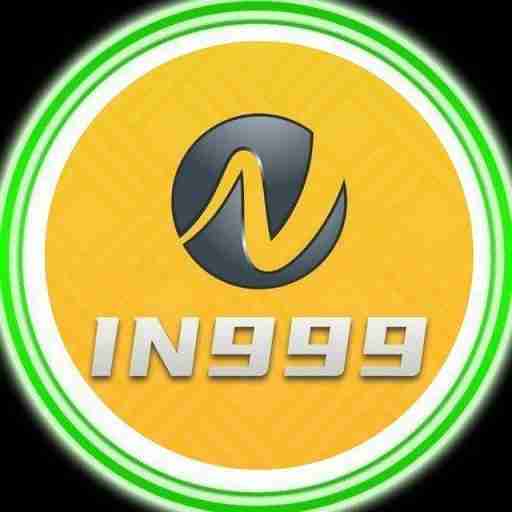In today’s fast-paced world, the need for efficiency in our workflows is more crucial than ever. With the rapid advancement of technology, various tools and extensions have emerged that can enhance productivity and streamline tasks across different fields. Whether you’re a student, a professional, or an entrepreneur, integrating these resources into your workflow can save time and improve the quality of your output. In this article, we will explore the significance of integrating tools and extensions into your workflow and provide insights on how to do it effectively in 999.
The Importance of Workflow Integration
Integrating tools and extensions into your workflow may seem like an optional luxury, but it can actually be a game-changer for productivity. Here we explore why integrating these resources is essential in today’s working environment.

Enhanced Efficiency
The primary benefit of incorporating tools and extensions into your workflow is enhanced efficiency. The applications available today are designed to automate mundane tasks, allowing individuals and teams to focus on higher-level responsibilities. For instance, project management tools like Trello or Asana can help team members stay organized, assigning tasks and tracking their progress seamlessly.
Using automation tools such as Zapier can further boost efficiency by connecting different apps and automating repetitive tasks. This minimizes the chances of human error and ensures that work is completed faster and more accurately.
Improved Collaboration
Collaboration is key in any workplace. Tools that facilitate communication and teamwork can significantly improve productivity. Platforms like Slack or Microsoft Teams enable real-time messaging and file sharing, making it easier for teams to collaborate from anywhere in the world. By integrating these tools into your daily workflow, you ensure that everyone is on the same page, fostering a collaborative culture and improving overall outcomes.
Extensions that allow for easy sharing and feedback, such as Google Docs or Dropbox Paper, also play a critical role in increasing collaboration. These tools allow multiple users to work on the same document simultaneously, providing instant feedback and enabling quick revisions.
Streamlined Communication
Clear communication is the backbone of any successful project. Integrating communication tools within your workflow can eliminate much of the ambiguity that often accompanies email exchanges. Tools like Zoom or Skype facilitate video conferencing, allowing teams to discuss projects face-to-face, even if they are miles apart.
Furthermore, utilizing integrations with project management tools can help ensure that messages related to specific tasks or projects are easily accessible. This makes it easier to keep track of important discussions and decisions, reducing the risk of miscommunication.
Data-Driven Decisions
Integrating analytics tools into your workflow allows for data collection and analysis, which is vital for informed decision-making. With tools like Google Analytics or Tableau, organizations can gather valuable insights about their performance, customer behavior, and market trends.
Having access to real-time data enables teams to make adjustments quickly, focusing their efforts where they’re needed most. This proactive approach often leads to better outcomes, enhancing the effectiveness of strategies employed.
See more: in999
Choosing the Right Tools and Extensions
With countless options available, choosing the right tools and extensions can be overwhelming. Understanding your needs and evaluating different options is crucial to finding the best fit for your workflow.

Assessing Your Workflow Needs
Before diving into tool selection, it’s essential to assess your current workflow. Identify the areas where you experience bottlenecks or inefficiencies. Are there repetitive tasks that consume too much time? Is communication between team members suffering? By pinpointing these pain points, you can focus your search on tools that address them directly.
Consider conducting surveys or interviews with team members to gather feedback on their experiences and suggestions for improvement. This inclusivity not only increases buy-in when new tools are introduced but also ensures that you’re meeting the needs of those who will be using them.
Researching Available Options
Once you’ve assessed your needs, the next step is to research potential tools and extensions. Start by looking at reviews and ratings on trusted websites. User testimonials can provide insight into the strengths and weaknesses of each tool, helping you narrow down your choices.
Additionally, exploring trial versions or free tiers can give you first-hand experience with the software before committing financially. During this evaluation period, pay attention to the user interface, ease of integration with existing processes, and customer support availability.
Considerations for Integration
When selecting tools, consider their compatibility with your current systems. Ensure that they can smoothly integrate with software you already use to avoid disruption during implementation. Look for customizable features that allow you to tailor the tool according to your specific needs.
Moreover, think about the scalability of the tool. As organizations grow, their tool requirements change, so it’s wise to choose solutions that can evolve alongside your business.
Training and Adoption
After selecting the right tools, focus on training your team for seamless adoption. Provide comprehensive onboarding sessions and create documentation to guide users through setup and utilization. Encourage team members to explore the features that will empower them to maximize their productivity.
Fostering a culture of experimentation can also encourage engagement. Allow team members to share their experiences and tips for using the tools effectively. This communal knowledge-building can lead to innovative uses for tools that benefit the entire team.
Implementing and Optimizing Your Tech Stack
Integrating tools and extensions into your workflow is just the beginning. To truly reap the benefits, it’s vital to implement and optimize your tech stack continuously.
Creating a Centralized Hub
One effective strategy for maximizing tool integration is creating a centralized hub for all your applications. This hub could be a dedicated platform or dashboard that consolidates access to all your tools. By having everything in one place, team members can quickly navigate to the necessary resources without wasting time searching for them.
Tools like Notion or Airtable can serve as excellent centralized hubs, offering customization options for organizing information and creating a streamlined workflow. Centralization reduces friction and helps maintain focus, ensuring that everyone stays aligned on goals.
Regularly Reviewing Tool Efficacy
As your organization evolves, it’s crucial to regularly review the effectiveness of the tools in your tech stack. Establish a schedule for evaluating the impact of each tool on your overall workflow. Solicit feedback from team members to identify any challenges or limitations they face while using specific tools. This ongoing assessment will help you determine whether certain tools still meet your needs or if alternatives should be explored.
Staying Updated on New Developments
The tech landscape is continually changing, with new tools and extensions emerging to address evolving needs. Stay informed about industry trends and innovations to ensure that you’re leveraging the latest advancements. Participating in webinars, attending conferences, or following relevant blogs can help you discover new solutions that might enhance your workflow.
When new tools arise, don’t shy away from experimenting with them. Conduct trials and gather input from your team to evaluate if they can replace or complement existing solutions.
Fostering a Culture of Continuous Improvement
Encouraging a culture of continuous improvement can help ensure that your team remains agile and open to change. Promote the idea that optimizing workflows is an ongoing process. Celebrate successes achieved through tool integration while remaining receptive to suggestions for further enhancements.
Creating opportunities for team members to share their experiences and learnings can foster innovation. Collaborative brainstorming sessions can lead to creative solutions that improve workflows and overall productivity.
FAQs
What types of tools should I consider integrating into my workflow?
There are several categories of tools to consider, including project management software, communication platforms, time-tracking applications, and data analytics tools. The best choice ultimately depends on your unique workflow needs.
How do I know if a tool is worth the investment?
Evaluate the potential ROI based on increased efficiency, improved collaboration, and time saved by using the tool. Additionally, look for user reviews and case studies to gauge its efficacy in similar environments.
Can I integrate multiple tools together?
Yes! Many modern tools offer integration capabilities with other software. Platforms like Zapier allow you to connect different applications and automate workflows between them, enhancing overall functionality.
What should I do if my team resists using new tools?
Address concerns openly by discussing the benefits and providing thorough training. Engaging team members early in the decision-making process can also increase buy-in and reduce resistance.
How can I measure the success of integrated tools in my workflow?
Success can be measured through key performance indicators (KPIs) such as increased productivity, reduced task completion times, improved collaboration metrics, and heightened employee satisfaction with the tools used.
Conclusion
Integrating tools and extensions into your workflow is a transformative step toward enhancing productivity and streamlining operations. By recognizing the importance of integration, choosing the right tools, implementing them efficiently, and maintaining an adaptable mindset, you can position yourself and your team for success. Embracing technological advancements not only saves time but also fosters a culture of collaboration and innovation. So, take that leap, and start integrating tools today for a more efficient tomorrow!
